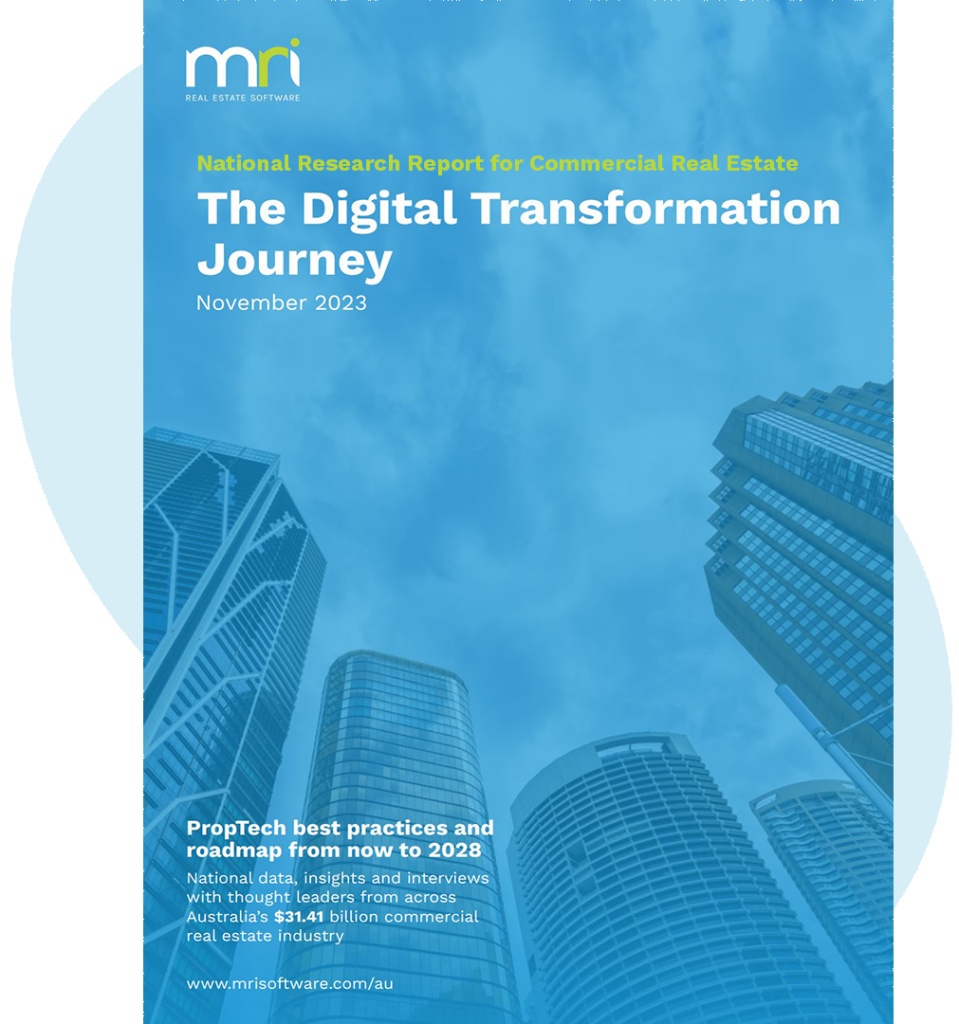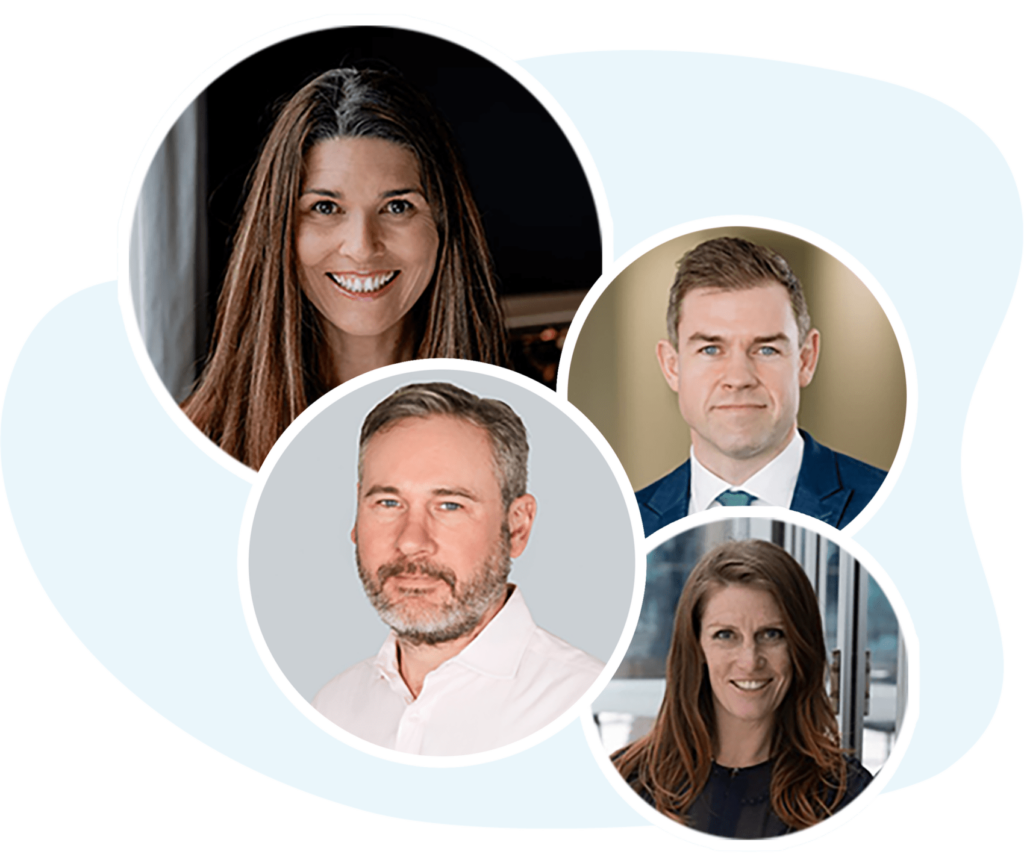Voices of Digital Transformation: Expert Insights Series
Antonia Trumbull, Head of Commercial Real Estate and Retail Segment, Schneider Electric
Our expert insights series is based on outreach conducted by MRI Software for its national research report for the commercial property sector – Voices of Digital Transformation Report.
About Schneider Electric
Schneider Electric drives digital transformation by integrating world-leading process and energy technologies, software and services, across the entire lifecycle, enabling integrated management for buildings, data centres, infrastructure and industries. Schneider Electric has gained many accolades for its work in sustainability, and has been named the world’s most sustainable company in relation to supply chain decarbonisation.
We spoke to Antonia Trumbull, Schneider Electric’s Head of Commercial Real Estate & Retail Segments.
The Digital Transformation Journey
PropTech best practices for commercial real estate from now to 2028.
Get the report
Navigating business challenges
Antonia believes that uncertainty is one of the property industry’s current top challenges, and it’s leading to businesses being more risk adverse in their decision-making and digitisation processes.
The uncertainty the industry is facing includes general economic uncertainty, as well as uncertainty about specific things like flexible working. Also, with the rapid rate of change, having to make a decision on technology today is difficult when you don’t know which solutions will be available in the future.
– Antonia Trumbull, Schneider Electric.
This is compounded by having multiple stakeholders with different goals, leading to a lack of internal alignment on identifying, selecting and approving new technology, she adds.
There are also a number of other, more practical challenges, such as the procurement process. “This is the case particularly in large developments where the decision makers are not the end users of the technology,” Antonia says.
“Consequently, the challenge we frequently encounter, and one that our customers also face in the procurement process, is that the value of technology throughout the lifecycle and operations is often disregarded. More often than not, decisions are based primarily on price, with a focus on the short-term rather than the long-term benefits and implications.”
Implementing new solutions
Antonia notes that market-leading businesses aren’t just price-driven. “We work with customers who want a partnership based on mutual success, because we know this is a long-term journey,” she says. “It’s not just a matter of purchasing an off-the-shelf product to fulfill an immediate need. Rather, it’s crucial to consider the future implications of the technology being introduced into your buildings.”
“With technology and digitisation evolving so quickly, ongoing investment in research and development is required, as well as the integration of necessary expertise into the business. Being committed to providing these resources is essential to the process,” she adds.
When it comes to implementing new technology, Antonia believes it’s important to take a step-by-step approach, prioritising scalable and sustainable solutions rather than attempting a comprehensive overhaul that could lead to unnecessary complexity and involve too many decision-makers.
You don’t have to integrate 20-30 systems in a building. Instead, you really need to look at your low hanging fruit and then build on that. (Otherwise) it’s just going to be too expensive, too hard and, by the time you get it done, half of it could be redundant.
– Antonia Trumbull, Schneider Electric.
“Considering the intricacies of integrations and data management, it’s unlikely that you’ll have all these resources readily available internally. Identifying your subject matter experts (SMEs) is valuable, but it’s equally as important to get external guidance in areas where you lack in-house expertise.”
She says that while integrations have always been an issue, things are improving and that we now have a much higher level of integration skill on both the customer side and the vendor side. “There are a number of market leading organisations that recognise the value of integrating systems, and sharing the upfront costs so they’re scalable and everyone can benefit from them.”
Managing change and measuring success
Antonia believes that emerging technology poses challenges for assessing ROIs effectively. A data timeline of two to three years is typically required and by this stage, the goalposts are likely to have changed.
She says that customers who rely primarily on expertise and common sense rather than “hard” ROIs are more likely to realise value from digitisation, and consequently transform their buildings more quickly.
“It can be quite tricky to tie things like tenant retention back to a single tech solution. However, if you’re aware that your tenants are seeking data for their real estate portfolios, digitising your assets and providing them with that data could enhance your leasing and tenant retention efforts. These sorts of measures require a deep understanding of your business and customers’ needs to work effectively.”
Difficulties aside, several “Smart Buildings” and IoT technologies can offer a clearer path to quantifying the impact on business outcomes than some other digital solutions. Energy impact and maintenance efficiencies are both great places to start.
(Tools that) track energy efficiency not only contribute to sustainability goals but also allow for easy quantification of cost savings. Similarly, optimising maintenance processes through predictive and data-driven approaches can minimise unnecessary callouts and planned maintenance activities.
-Antonia Trumbull, Schneider Electric.
Dealing with data security
“Dealing effectively with data security and privacy comes down to both internal due diligence and knowing you’ve relied on technology providers that can provide the relevant and requisite third-party advice,” Antonia says.
“If you don’t have inhouse expertise to put high level cybersecurity protocols in place, you need to seek it out externally. You should also be aware that cybersecurity risks and practices for your operational technology and onsite systems are very different to those for many software platforms.”
Lessons and best practices
Surround yourself with the right stakeholders and partners when it comes to technology, because it is evolving very quickly.
– Antonia Trumbull, Schneider Electric.
Selecting partners you can trust is key according to Antonia. “Don’t try and do it all yourself – seek the help of those with the right expertise. Ones that you know are investing in the right areas.”
Most importantly, “Keep it simple and acknowledge that nothing is ever going to be perfect. Inaction is the biggest risk, so avoid the mindset that says you’re not ready, or that now isn’t the right time. Understand that digitising your assets is going to be a journey rather than a ‘once and done’ deployment.”
Proptech trends to watch
Antonia says that AI will impact a range of operations through its ability to capture and analyse data more quickly and effectively.
We know that 30% of energy is wasted in commercial real estate and AI is set to have a huge impact on monitoring and managing energy efficiency and in meeting sustainability and net zero impact goals. Cost savings are an added benefit.
– Antonia Trumbull, Schneider Electric.
“Also, occupancy and people data has traditionally been very retrospective, and one thing I’m really excited about is using AI to understand how owners and occupiers can change their processes to drive efficiencies in a building,” she adds.
“Now that we have more flexible workplace environments and mixed use precincts, buildings are being used very differently and they’re a lot less predictable. Whether it’s your security, access control, visitor management or other BMS system, taking the people data and applying it back to the operational technology to make better decisions in real time will be a game changer.”
Another notable trend from Antonia’s perspective is supply chain decarbonisation. Schneider Electric has emerged as a frontrunner in this area and has been recognised as the world’s most sustainable organisation for its supply chain.
Our approach involves focusing our top 1000 suppliers and facilitating the decarbonisation of their operations. We actively work to enhance energy efficiency in their manufacturing plants and related facilities, to cut carbon from the supply chain and fulfil Scope 3 targets.
– Antonia Trumbull, Schneider Electric.
Antonia adds that since the Australian commercial real estate industry shares the same group of builders and suppliers, everyone should be responsible for addressing these problems through industry associations like the Property Council and similar avenues.
Download a copy of the Voices of Digital Transformation Report here and learn more about how Australian real estate businesses are embracing proptech best practices to help achieve strategic goals.
Digital Transformation and Proptech Best Practices
Like most industries, the commercial real estate sector is going through a rapid digital transformation. To better understand what specific challenges technology is now tasked with solving, we conducted an in-depth survey with over 100 leading commer…


